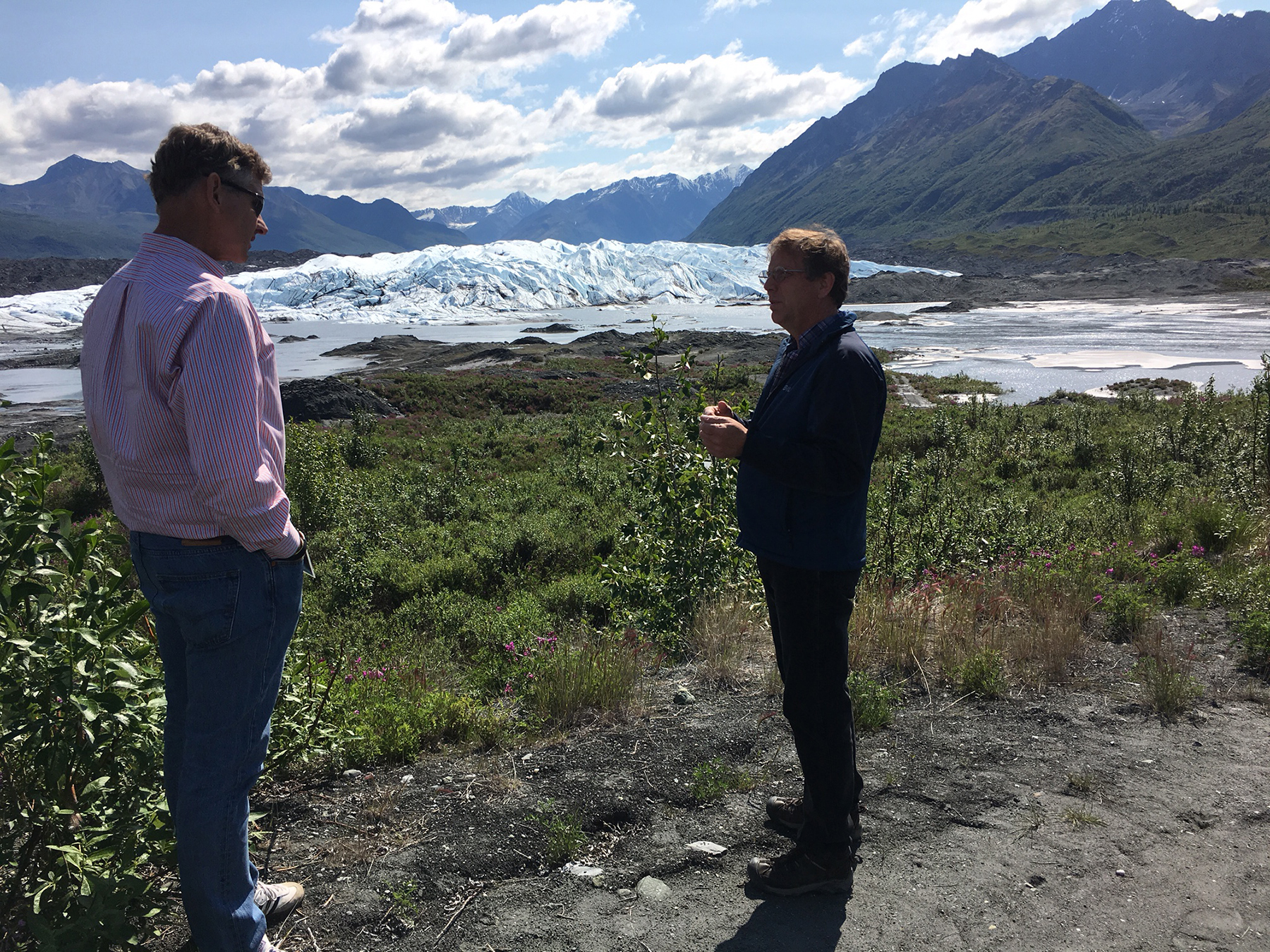Through cooperation and compromise, CIRI settles land issues that result in new revenue streams for the company.

When it comes to managing CIRI’s lands, the company abides by a philosophy that strikes a balance between sustainably developing resources to generate income for shareholders and protecting lands for future generations.
This philosophy was established early on, and it continues to this day. Recently, two trespass issues were resolved –
one near the Matanuska Glacier, the other along the Kenai River. The resolutions ultimately resulted in new revenue
streams for CIRI.
“I view trespass issues, especially by commercial entities, as a serious matter. CIRI must protect its rights as a landowner, but trespass is also as a sign of market demand for access to CIRI lands,” said Ben Mohr, surface
estate manager for CIRI’s Land and Resources division.
With that view in mind, CIRI recently executed two agreements that leverage the self-interest of the counterparties to aid CIRI in its land management obligations. “Basically, if we can find entities to manage and market CIRI’s land, and share in the financial benefits of doing so, it’s the right thing to do,” Mohr said.
A Little History
With the passage of the Alaska Native Claims Settlement Act (ANCSA) in 1971, CIRI was entitled to 1.25 million acres of land and an additional 2.25 million acres of subsurface estate. However, much of the quality land in Southcentral Alaska was already spoken for by the state, private interests or tied up in federal conservation units or reserves, leaving CIRI significantly less valuable and remote lands from which to make its ANCSA entitlement selections. “Mainly mountainous or glacial terrain… inaccessible for even goats and sheep,” read an article in the 1972 CIRI newsletter.
In 1976, rounds of negotiations with the state and federal governments led to the Cook Inlet Land Exchange, which not only enabled CIRI to acquire valuable land on the Kenai Peninsula and other areas around Cook Inlet, but allowed the company to bid on out-of-region land selections. Because CIRI fought for its rightful entitlement, the company was able to select valuable lands that would, over time, bring in hundreds of millions of dollars, providing CIRI a strong financial foundation.
Today, CIRI is the largest private landowner in Southcentral Alaska. Its parcels include resource-rich lands, such as those within the various gas fields of the Kenai Peninsula; urban tracts, such as the land on which the Tikahtnu Commons Retail and Entertainment Center was built; and other parcels, including those attractive to tourists, sightseers, sportsmen and outdoor enthusiasts.

with Matanuska Glacier Park caretaker and guide Bill Stevenson. Photo by Carly Stuart.
Matanuska Glacier
Located 100 miles northeast of Anchorage, the 27-mile-long, 4-mile-wide Matanuska Glacier is the largest glacier in Alaska that can be reached by vehicle. Public access to the glacier is facilitated by Matanuska Glacier Park, a private business operated by Alaska Outfitters that offers both unguided access and guided
glacier tours.
CIRI owns 1,050 acres of land near the glacier, located in and around the town of Glacier View. A trespass report was originally generated in connection with that land in August 1983, by a photographer who was told to leave by a person who stated it was private property. Upon further research, the photographer learned the land belonged to CIRI and reported the individual who was claiming it as his own. CIRI devoted significant time and interest to the trespass situation through the mid- 1980s, with occasional attention thereafter.
Fast-forward to 2016: CIRI received a request from an individual seeking permission to gather firewood on company-owned lands near the glacier. When staff reviewed satellite imagery of the area in question as a part of the process of responding to this request, it became evident that a portion of the parking lot and trail system used by Alaska Outfitters encroached on CIRI-owned land. “By providing glacier access across and within CIRI property, Alaska Outfitters was profiting from CIRI’s land without compensating the company and potentially exposing CIRI to risk,” Mohr said.
When it came to resolving the problem, CIRI’s objectives centered on 1) reducing CIRI’s exposure to liability due to public access of its private property; and 2) protecting CIRI’s interest in its private lands by obtaining compensation from a third party commercially benefitting from CIRI lands.
This spring, CIRI executed a commercial access lease with Alaska Outfitters that settles the ongoing trespass issues. The lease’s terms include an annual rental fee that will increase annually and required insurance coverages to reduce CIRI’s liability. While Alaska Outfitters has exclusive rights to tourism and recreational activities on approximately 1,000 acres around the glacier, CIRI retains the right to otherwise utilize its land for non-competitive business opportunities.
“The agreement we signed with Alaska Outfitters reduces CIRI’s liability, generates a small income stream and gives us a partner who is active in ensuring the land is treated well,” Mohr said.
Kenai River

Approximately 7 percent of the banks of the lower and middle Kenai River, between the Kenai National Wildlife Refuge and the waters of Cook Inlet, are held as private property by CIRI. These streambanks have been utilized as public lands for many years, largely due to the lack of 1) knowledge of property ownership along the river; 2) signs notifying the public of land ownership status (and the illegal removal of these signs); and 3) active enforcement procedures.
“The Kenai River is a world-class resource, and we were seeing unacceptable impacts to our property due to trespass activity – trees being felled, grasses being cut, digging, and a lot of erosion just from foot traffic,” Mohr said.
In extreme examples, camps and makeshift docks have been erected on CIRI lands and streambanks were illegally modified to support trespass activities. Residents along the Kenai River, as well as officials from Alaska State Parks, various trade and industry groups and law enforcement, shared CIRI’s concerns over the impacts of trespassing. “Working with these groups, and filtering ideas past them, resulted in a plan that CIRI believes will help remedy this ongoing issue,” Mohr said.

Recently, for a fee, CIRI began granting members of the Kenai River Professional Guide Association (KRPGA) non-exclusive access to its lands. In exchange, KRPGA members have offered their cooperation in reporting trespass. “Our theory was, let’s find partners who have an interest in stewarding the land and helping CIRI balance competing uses,” Mohr said. “Professional fishing guides were an obvious choice.”
CIRI allows access for individual users through its recreational use permitting process. Priority for recreational access will be provided to CIRI shareholders and registered confirmed descendants, and then to residents of the Kenai Peninsula. “We obviously want to preserve CIRI’s lands as a heritage asset, but we also want to accommodate our neighbors,” Mohr said. “It’s private property; we could just kick people off. But we prefer to do the neighborly thing.”
Individuals who wish to access CIRI lands can visit ciri.com/our-lands/permitting for more information.



